Are you on the hunt for a plant that will add a touch of beauty and fragrance to your outdoor space? Well, have you considered the lovely gardenia?
But before you rush out to buy one, you might be wondering if gardenias have invasive roots that could harm other plants or structures nearby.
We have some fantastic news for you.
Gardenias are considered shallow-rooted shrubs, which means their roots spread out close to the surface and won't grow deep down into the earth.
So, you can enjoy the beauty of these stunning blooms without worrying about them causing any disruptions to your other plants or even your home's structure.
Keep reading to learn more about the gardenia root system!

Is Gardenia Deep Rooted?
Gardenias have a shallow root system. Their roots do not grow deep down into the earth but instead grow horizontally, extending outwards from the base of the plant.
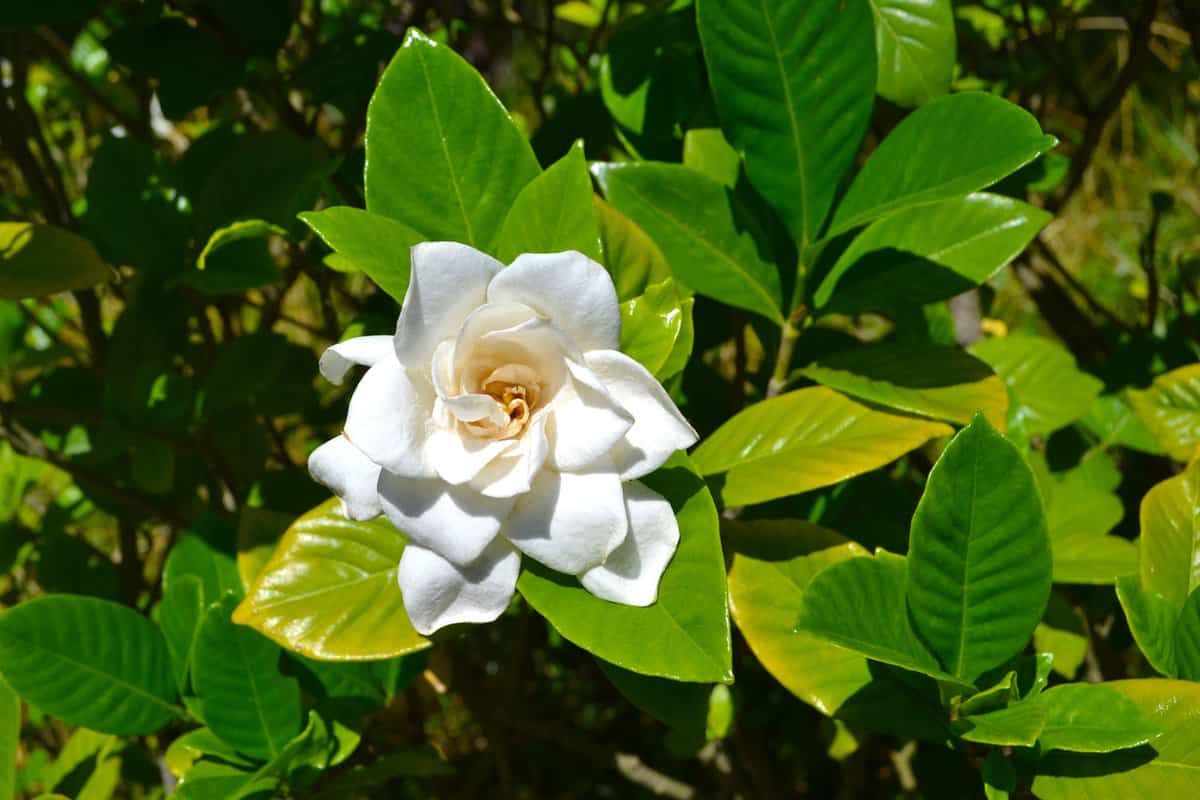
In general, gardenia roots can grow up to 2-8 feet wide and only about 6-12 inches deep.
Their shallow root system makes gardenias less likely to disrupt the growth of other plants or cause structural damage.
It's important to note that gardenias prefer well-draining soil and can be sensitive to overwatering, which can lead to root rot.
So, be sure to plant them in soil that drains well and avoid overwatering to keep their shallow roots healthy.
Does Gardenia Have Invasive Roots?
Gardenias are generally considered to be non-invasive.
However, it's important to note that gardenia roots can still cause some problems if planted too close to other plants or structures.
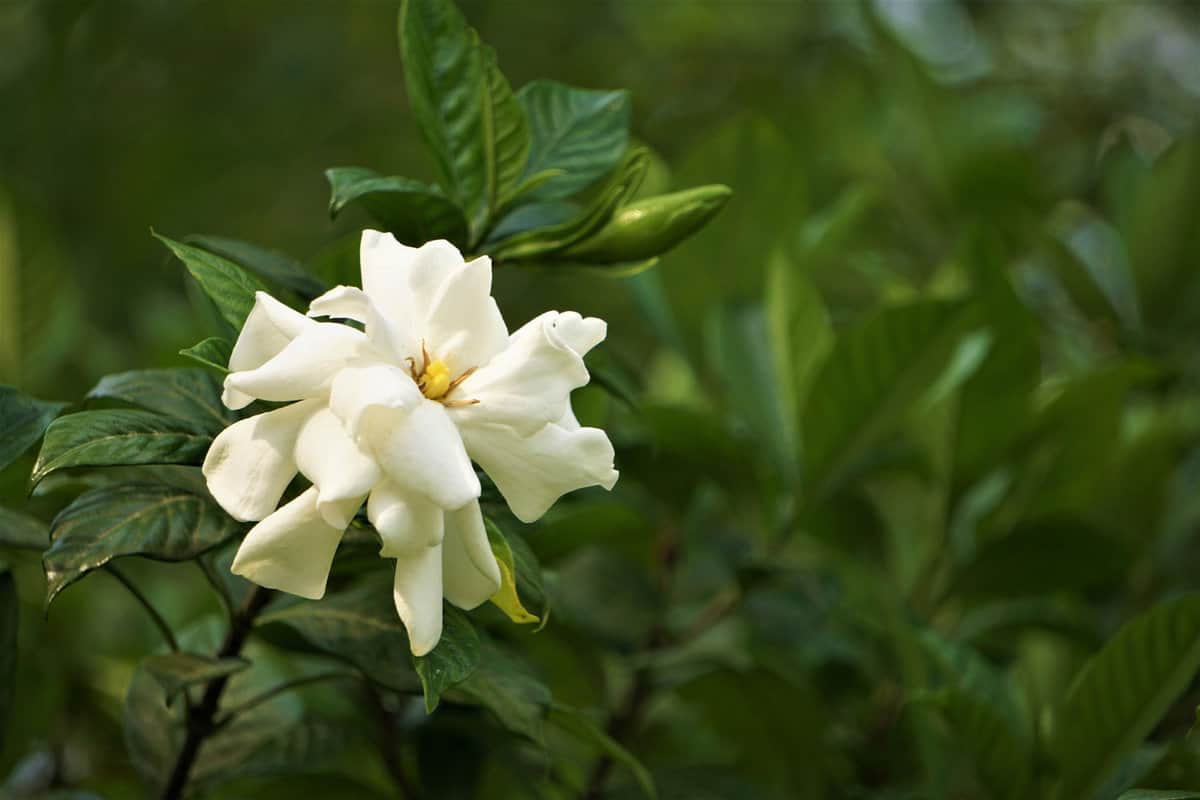
If gardenias are planted too close to other plants, their roots can compete with them for water and nutrients, potentially stunting their growth.
Related: My Gardenia Is Dying – What To Do?
Additionally, if gardenias are planted too close to a structure such as a house or a fence, their roots can potentially cause damage.
As the roots grow, they can push against the structure and cause cracks or even break the foundation.
So, while gardenias are not invasive, it's still important to give them enough space so their roots can spread without causing any issues for nearby plants or structures.
Does Gardenia Spread or Multiply?
In their natural habitat, gardenias can reproduce through seed propagation. They produce a fleshy, berry-like fruit that contains seeds.
When the fruit falls to the ground, the seeds can germinate and grow into new gardenia plants.
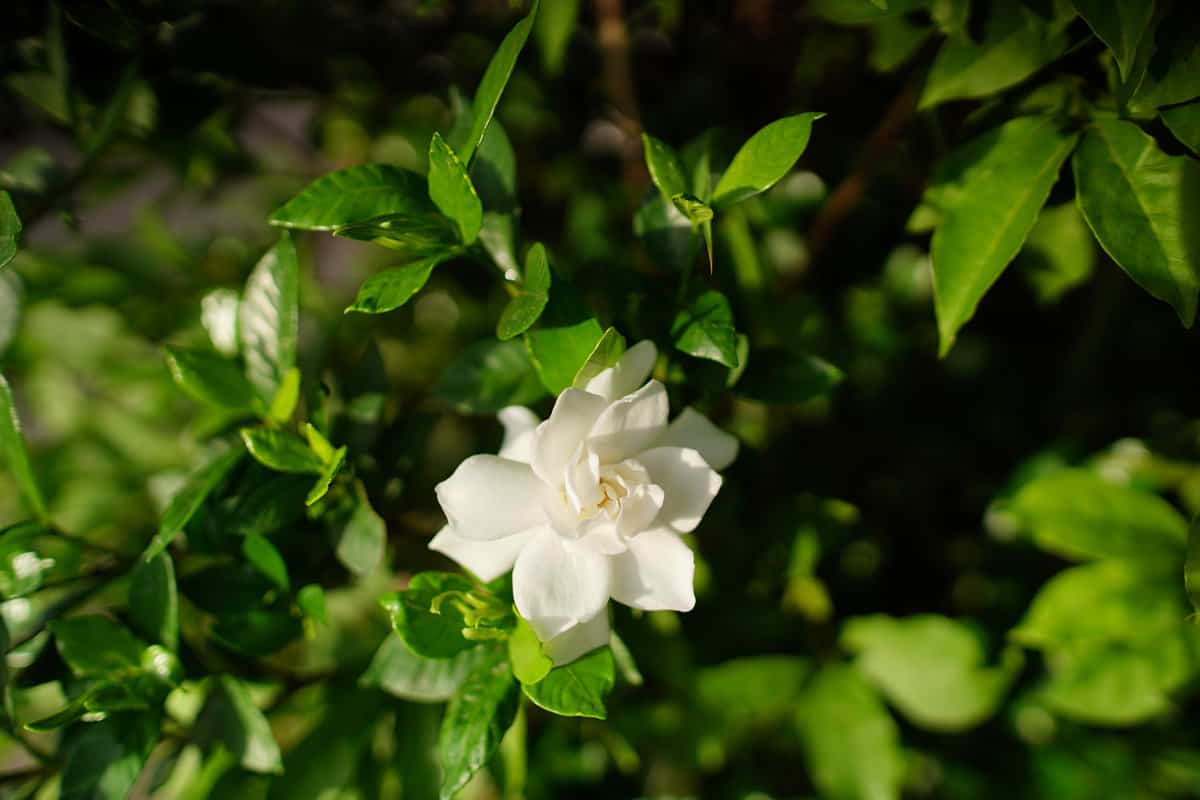
However, this method of reproduction is generally slow and can take around 2 or 3 years for the new plants to reach maturity and produce flowers.
Gardenias can also spread artificially through vegetative propagation. This involves cutting from an existing plant and rooting them in the soil to create new plants.
Vegetative propagation can be faster than seed propagation and can result in new gardenias that are genetically identical to the parent plant.
Overall, they generally do not spread or multiply quickly, meaning they are less likely to take over your garden or disrupt the growth of other plants.
How Do You Keep Gardenia From Spreading?
As mentioned, even though gardenias don't have invasive roots, they can still spread and multiply through their branches.
That's why regular pruning is essential to keep them from spreading uncontrollably.

Prune your gardenias in late summer or fall, right after they finish blooming. This helps maintain their shape and size while preventing them from overtaking your garden.
Regular pruning will help keep your gardenias in check so you can enjoy their beauty without any worries.
Related: When To Trim Gardenias In Florida? [Can You Do This All Year?]
Where is the Best Place to Plant a Gardenia?
Gardenias thrive best with plenty of sunlight.
Choose a spot where it can enjoy 4-6 hours of sunlight daily. However, remember that in warmer climates, it's best to protect your gardenia from the intense afternoon sun.
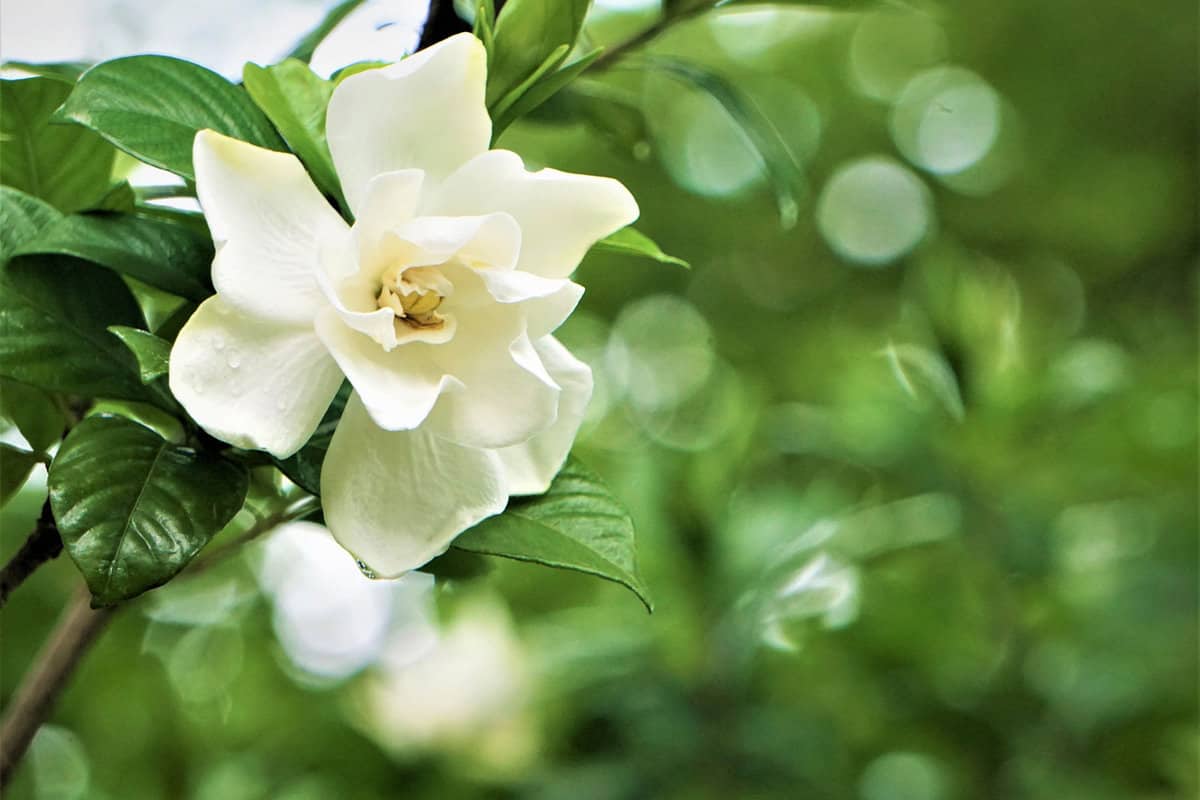
Go for an area with only morning to mid-day light. In cooler temperature regions, you can opt for a location with full sun.
Related: How To Overwinter Gardenia – In Pots And In Ground
Can You Plant Gardenia Close to a House?
Gardenias can be planted close to a house. However, it's essential to give them enough space to grow and spread out without causing any damage to the structure.

Gardenias should be planted at least 3 feet away from any structures, such as your house or fence, to prevent their roots from causing damage.
Can Gardenia Roots Damage Foundation or Pipes?
Gardenia roots rarely cause damage to foundations or pipes.
However, as with any plant, if gardenias are planted too close to a structure, their roots can potentially erode them.
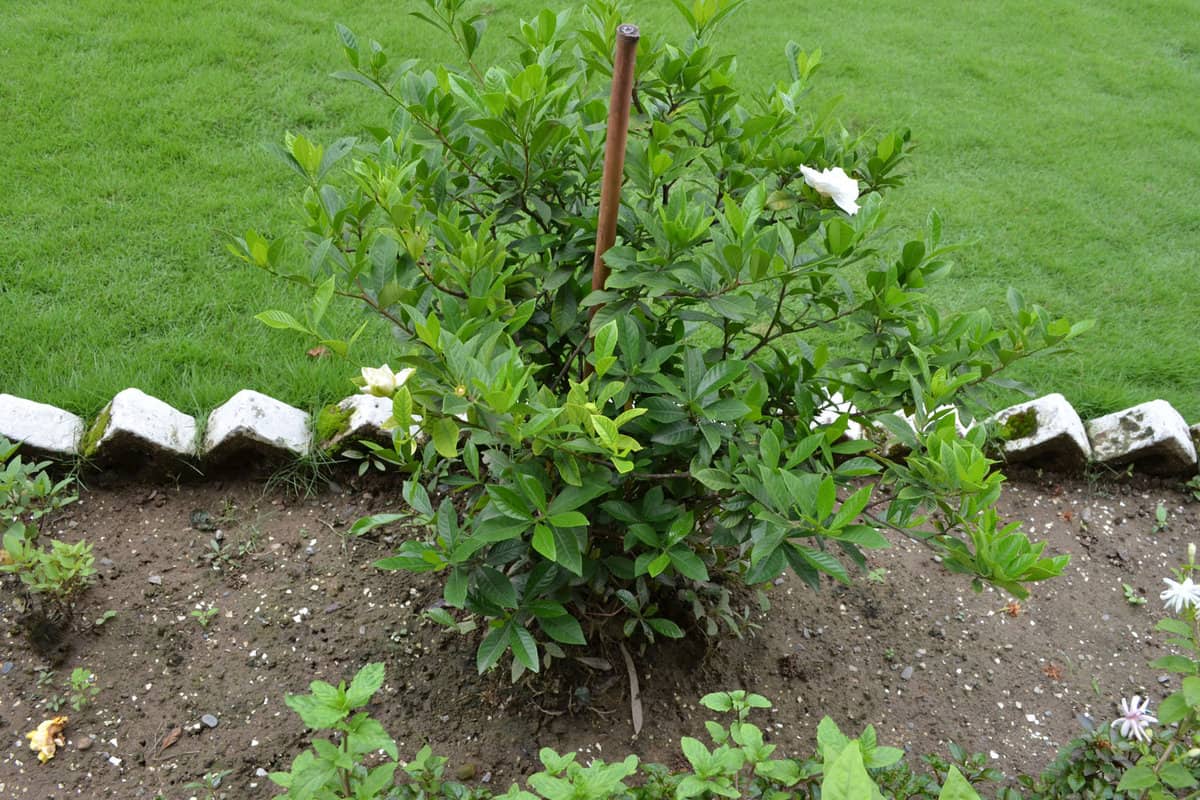
For instance, they may squeeze through cracks in pipes in search of water and widen them, causing more leaks.
Additionally, if the soil around the foundation is already unstable or prone to shifting, the roots can potentially exacerbate the problem.
How Much Space Does Gardenia Need?
For smaller gardenia varieties, aim for at least 3-6 feet apart from other plants. Larger varieties will require at least 6-8 feet.
Doing so will ensure they don't compete with other plants for soil nutrients and allow their roots to spread comfortably.
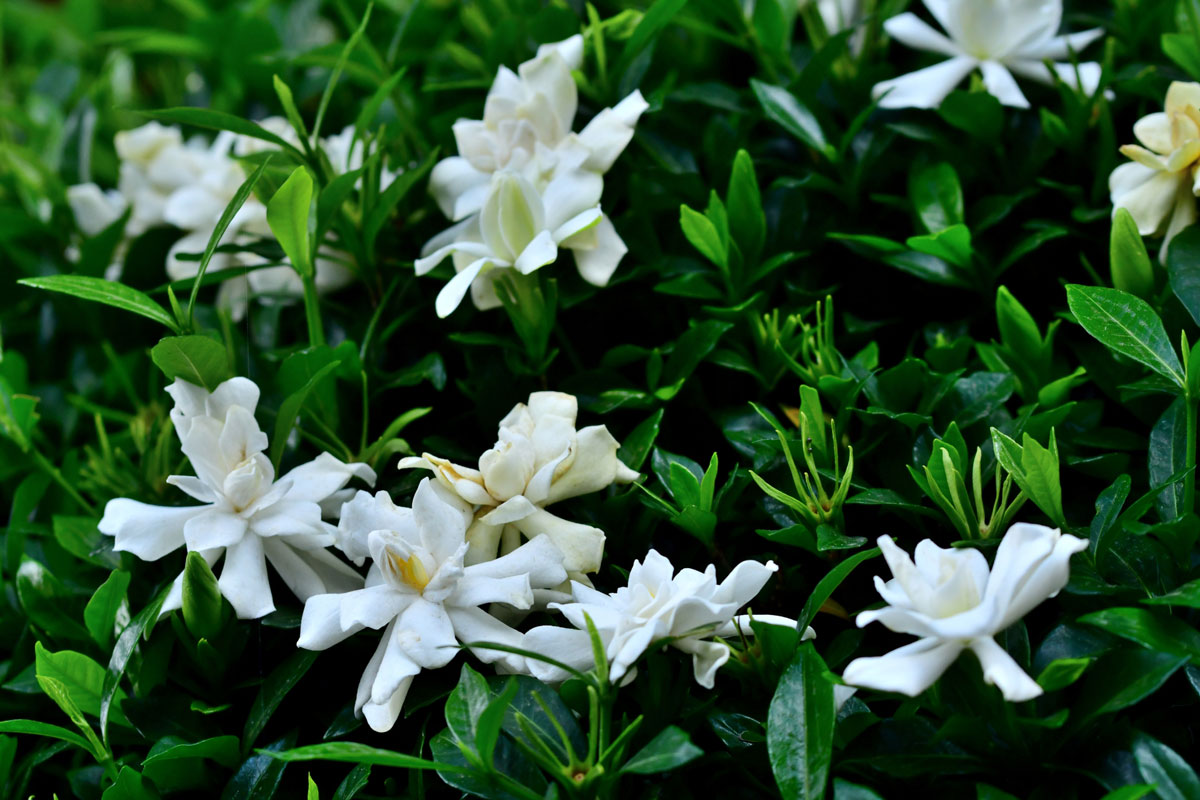
Planting them in a wide hole with well-draining, acidic soil with a pH between 5 and 6 will help them thrive.
Additionally, it's important to place gardenias away from sidewalks, driveways, and building foundations to prevent their roots from causing cracks or leaks.
How Can You Get Rid of Gardenias?
Although gardenias are beautiful flowering plants with a delightful fragrance, there might come a time when you need to remove them from your garden.
Follow the steps below:
Step 1: Cut Back the Plant
If you're removing the gardenia because it's too large or taking up too much space, start by cutting back the plant.
Use pruning shears to trim back the branches to the desired size. This will make it easier to remove the plant from the ground.
Step 2: Dig Up the Roots
Once you've cut back the plant, use a shovel to dig up the roots. Start at the edge of the plant and work your way inward, loosening the soil as you go.
Be sure to dig deep enough to get all of the roots!
Step 3: Remove the Plant and Roots
Once you've loosened the soil around the plant, carefully lift it out of the ground.
Shake off any excess soil and remove any remaining roots. If the plant is too heavy to lift, you may need to use a garden fork to loosen the soil further.
Step 4: Dispose of the Plant
Once you've removed the plant and roots, dispose of them properly. You can compost the plant material or dispose of it in your yard waste bin.
Step 6: Fill in the Hole
After removing the plant, fill in the hole with soil and tamp it down firmly. Water the area well to help settle the soil.
If you plan to plant something else in the same spot, add some compost or fertilizer to the soil to help improve its fertility.
Final Thoughts
Gardenias can make a beautiful and aromatic addition to your garden without any concern over invasive roots.
Still, giving them plenty of space to grow and develop is essential to ensure that your gardenias thrive.
By doing so, they'll have access to all the nutrients they need but also prevent them from causing damage to nearby structures.
Now that you understand gardenia roots better, consider this knowledge for your gardening endeavors!
